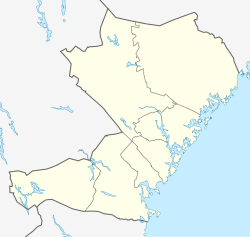Solleftea
| Sollefteå | |
|---|---|

Storgatan in Sollefteå
|
|
| Coordinates: 63°10′N 17°16′E / 63.167°N 17.267°ECoordinates: 63°10′N 17°16′E / 63.167°N 17.267°E | |
| Country | Sweden |
| Province | Ångermanland |
| County | Västernorrland County |
| Municipality | Sollefteå Municipality |
| Area | |
| • Total | 9.40 km2 (3.63 sq mi) |
| Population (31 December 2010) | |
| • Total | 8,562 |
| • Density | 911/km2 (2,360/sq mi) |
| Time zone | CET (UTC+1) |
| • Summer (DST) | CEST (UTC+2) |
Sollefteå is a locality and the seat of Sollefteå Municipality in Västernorrland County, Sweden with 8,562 inhabitants in 2010.
The earliest written account on Sollefteå is found in a script dating back to 1270. During this time the name of the village was given as De Solatum - a name that can be interpreted as a composition of Sol (sun) and at (property) i.e. literally The sunlit region.
With Sollefteå being located at the lowest rapids of the Ångermanälven thereby making it the last outpost to which it was possible to sail- The village developed into a municipality. The town changed from a commercial town into a town dominated by the military when the two regiments T 3 (Logistics) and I 21 (Infantry) were located there in 1898 and 1911 respectively.
In 1902 Sollefteå obtained the status of market town or köping before finally being granted a town charter in 1917 thereby making it a city.
It is now the seat of the much larger Sollefteå Municipality. Sollefteå is, despite its small population, for historical reasons normally still referred to as a city.
The pharmacy building was erected in 1889. It is a brick building, two and a half storeys high. The style of the building is influenced by the late 19th century architectural style and is dominated by the neo-Gothic style. The house was designed by the architect Niclas Wahrgren.
The many various architectural styles represented in the building is seen in the medieval inspired crenellated corner tower, Norman arches, North German gothic styles, blind windows with pointed arches and portico supported by columns. There are also renaissance elements in the design, for example the staircase's orientalic/antique and geometric mosaics with meanders. The overall style of the building is reminiscent of the palatial buildings erected on Strandvägen in and in the Stenstaden in Sundsvall at the same time.
...
Wikipedia


